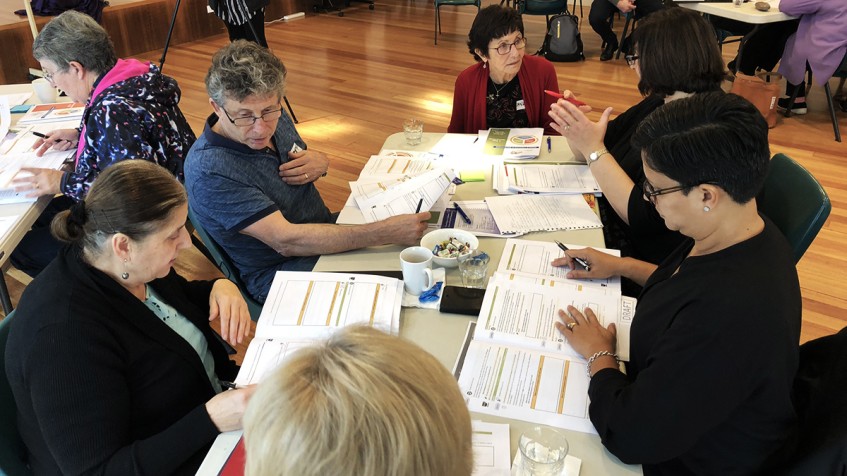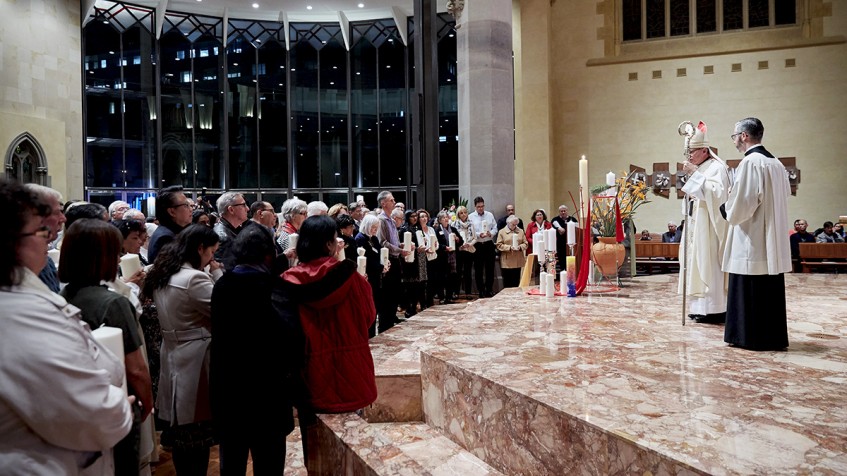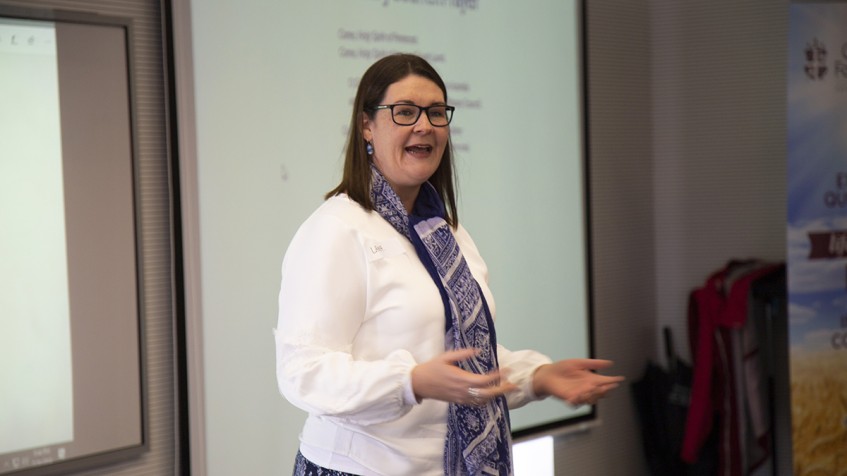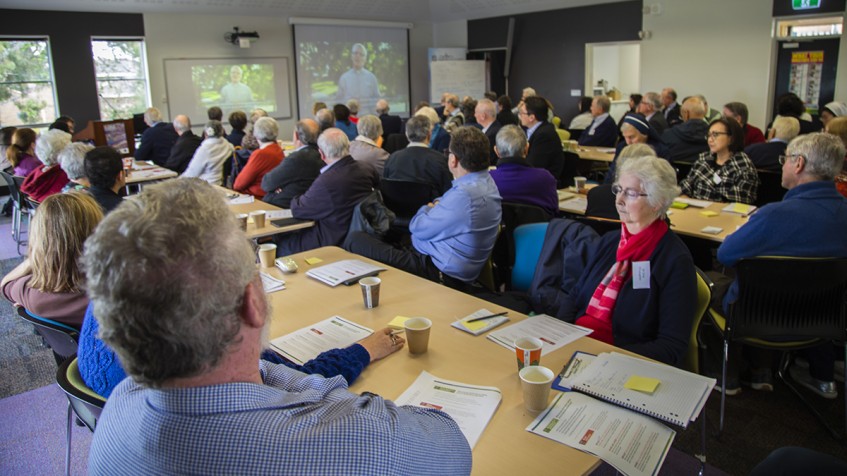SPECIAL REPORT: Plenary Council journey adapted for COVID-19 lockdowns; Opening Mass scheduled to take place in Perth

Plenary Council Animators gathered in Parramatta in 2019 to discuss the news stages of the Plenary Council process. Photo: Jamie O’Brien.
With just six weeks to the Opening Mass of the First Plenary Council Assembly the journey has been adapted to cope with changing circumstances caused by COVID-19.
Plenary Council’s Vice-President Bishop Shane Mackinlay from the Diocese of Sandhurst said with most of the country’s population currently in lockdown or having experienced lockdowns in recent weeks, we have plans in place to ensure the First Assembly opens on October 3.
“Just as there was disappointment in needing first to postpone the assembly and then to move to regional hubs, the likelihood that most members will now join the assembly from their home is not what we had planned and hoped for,” Bishop Mackinlay said.
“We know that the Holy Spirit can and will work through this assembly, just as the Spirit has led us over the past three-and-a-half years.”
The official national (and only) Opening Mass of the First Plenary Council Assembly celebrated by Council President and Perth Archbishop Timothy Costelloe SDB will take place at St Mary’s Cathedral on Sunday 3 October at 11. The Mass will be livestreamed nationwide.

Plenary Council President Perth Archbishop Timothy Costelloe distributes candles during the Perth launch of the Plenary Council at St Mary’s Cathedral in 2018. Photo: Ron Tan.
Plenary Council Co-ordinator for the Archdiocese of Perth Tony Giglia welcomed the decision, saying in the current environment it is important the valuable time contributed by Members is co-ordinated professionally and with respect to the process of the Council process.
“While we are not currently in a lockdown situation, the Perth Members will gather from their homes in unity with their fellow Members across Australia,” Mr Giglia said.
“The theme of the Plenary Council is ‘Listen to what the Spirit is Saying’. Once again, all involved in making the Plenary Council a reality are working frantically to ensure that each Member is able to participate fully in the First Assembly, regardless of their personal circumstances.
“Perhaps the Spirit is once again speaking to us in surprising ways. I would urge everyone to continue to pray for the organisers, the Members and their families and communities in these challenging times so that the First Assembly is as successful as we would all hope it would be,” Mr Giglia said.
Plenary Council Facilitator Lana Turvey-Collins said a huge amount of work had been done to prepare for the Council to be held in hubs, with each member participating on their own device.
“As a result, this shift to most people participating from home is a pivot rather than a major detour from what we were planning,” she said.
“We are receiving exceptional support from technical experts within and beyond the Church to ensure that we can make the virtual assembly one that allows for the prayer, conversation, listening and discernment we’ve hoped for all along.”

Plenary Council Facilitator Lana Turvey-Collins speaks during a Plenary Council Information Session in 2018. Photo: Jamie O’Brien.
Teams working on liturgy, communications and the Assembly’s program are also altering existing plans for the new format.
Bishop Mackinlay said the approximately 280 members of the Council gathered online in four groups in recent weeks to continue their formation, including from a technology perspective.
“While there has been greater exposure to videoconferencing in the past 18 months, the Microsoft Teams environment was new to some,” he said.
“What we encountered over the two days each group met was a stable platform, and one on which we can participate in meaningful dialogue with one another.

Perth Catholics watch a video of Archbishop Timothy Costelloe SDB during a Plenary Council Information Session in 2018. Photo: Jamie O’Brien.
“We were able to trial the practice of spiritual conversations that will be used during the assemblies and there were moments of prayerful encounter, even if via a screen.”
It is expected that, in some areas not affected by lockdowns, members will gather in small numbers for prayer, fellowship and socialising, as the experience of provincial hubs would have provided.
Plans for the public livestreaming of some parts of each day remain in place, and some liturgies will also be celebrated online.
“This is a Council for the Church in Australia, and we look forward to a wide range of people following the Assembly, hearing how conversations are unfolding and praying with the members,” Ms Turvey-Collins said.
